The main feature to do something like this is an OpacityMask. The example below uses a VisualBrush set to Tile for the mask and uses the transform property of the brush to do the motion you described.
<Window
xmlns="http://schemas.microsoft.com/winfx/2006/xaml/presentation"
xmlns:x="http://schemas.microsoft.com/winfx/2006/xaml"
xmlns:d="http://schemas.microsoft.com/expression/blend/2008" xmlns:mc="http://schemas.openxmlformats.org/markup-compatibility/2006" mc:Ignorable="d" x:Class="WpfApplication1.MainWindow"
Title="MainWindow" Height="447" Width="569">
<Window.Resources>
<Storyboard x:Key="Wave">
<DoubleAnimation Storyboard.TargetProperty="(UIElement.OpacityMask).(Brush.RelativeTransform).(TransformGroup.Children)[3].(TranslateTransform.X)" Storyboard.TargetName="ellipse" RepeatBehavior="Forever" From="0" To="1" Duration="0:0:1" />
</Storyboard>
</Window.Resources>
<Window.Triggers>
<EventTrigger RoutedEvent="FrameworkElement.Loaded">
<BeginStoryboard Storyboard="{StaticResource Wave}"/>
</EventTrigger>
</Window.Triggers>
<Canvas>
<Ellipse x:Name="ellipse" Fill="#FF82C6FF" Height="160" Canvas.Left="320" Canvas.Top="80" Width="160">
<Ellipse.OpacityMask>
<VisualBrush Visual="{Binding ElementName=wave}" TileMode="Tile" Viewport="0,-1,1,3" Stretch="None" >
<VisualBrush.RelativeTransform>
<TransformGroup>
<ScaleTransform />
<SkewTransform/>
<RotateTransform/>
<TranslateTransform Y="{Binding Value,ElementName=y}" />
</TransformGroup>
</VisualBrush.RelativeTransform>
</VisualBrush>
</Ellipse.OpacityMask>
</Ellipse>
<Grid x:Name="wave" Height="377" Canvas.Left="80" Canvas.Top="23" Width="160" Background="#00000000">
<Grid.RowDefinitions>
<RowDefinition Height="1*"/>
<RowDefinition Height="{Binding Value,ElementName=amplitude}"/>
<RowDefinition Height="1*"/>
</Grid.RowDefinitions>
<Path Fill="#FF82C6FF" Data="M12.5,1.6925709 C31.25,1.6925709 31.25,18.615654 50,18.615654 68.75,18.615654 68.75,1.6925709 87.5,1.6925709 87.499909,27.077196 87.5,27.077107 87.5,27.077107 63.28125,27.077136 12.5,27.077196 12.5,27.077196 12.5,27.077196 12.500094,27.077196 12.5,1.6925709 z" Stretch="Fill" Grid.Row="1"/>
<Rectangle Fill="#FF82C6FF" Grid.Row="2" Margin="0,-1,0,0" />
</Grid>
<Slider x:Name="y" Width="200" Minimum="-0.6" Maximum="1" Value="0"/>
<Slider x:Name="amplitude" Width="200" Minimum="1" Maximum="100" Value="20" Canvas.Top="23"/>
</Canvas>
</Window>
To hide the mask you could place it directly inside VisualBrush instead of a binding like above. You may also want to look at other types of brushes and their transforms and viewport/viewbox.
Update: The mask is now in two pieces so the wave amplitude can be adjusted separately. You can also adjust ScaleTransform.ScaleX to alter the frequency but you would need to make sure you get the whole wave or the animation stutters, e.g try 0.5,0.25,0.1
